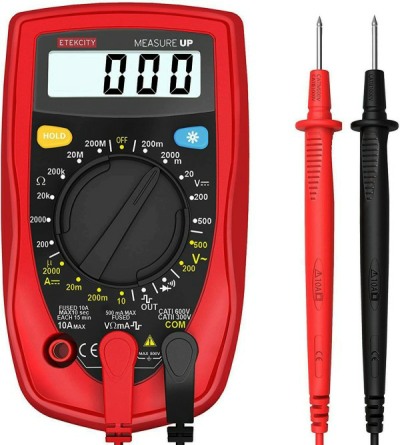Ask The Editors: Need Me Some Spark

When it comes to missing spark, grab the meter and start checking.
However when I roll it down a hill, engine starts and runs fine. It just doesn’t make sense. Could it be my ignition coil going bad? Or could it be rusty magnets in the stator or contacts that I need to clean or something? PLEASE HELP!
You did yourself a massive diagnostic favor by determining that it is a lack of spark preventing the machine from firing. In the trifecta of ingredients needed for combustion (air, spark and fuel) – you are at least on the road to determining the trouble.
It sounds simple but always start at the most basic and work your way back. Have you tried installing a new spark-plug? What about the wire? A very simple way to check the wire is to set your multi-meter to measure volts and then stick one probe into the cap, ground the other to the vehicle’s frame and turn the engine over. Is electricity making it this far?

If these measures don’t yield results, it’s time to work your way further back along the chain of possibilities. Checking the pickup coil is just as easy. Follow that spark plug wire back until you locate the cylindrical coil housing (which actually contains a pair of coils within – a primary and secondary). The primary is the one that receives the voltage and the secondary is the one that sends it along to the spark plug.
You should find a pair of wires leading into the coil. Remove these and set your meter to measure resistance this time (Ohms) and place the black probe to the negative terminal on the coil’s body. Red to the positive terminal (the one that connected to the red wire).
The readout on your meter should read between 0.5-Ohms and 1.5. If it falls outside this tolerance, time to replace the coil.
To check the secondary coil – place the black probe into the hole where the spark plug wire attached to the coil. Place your red once again on terminal where the red wire attached and check your readout. This time it should jump to somewhere between 6,000 and 15,000 Ohms of resistance. If it falls outside this range, you’ve located your problem.
If all of this checks out, then we’d turn to the stator. Testing this is actually just as easy but a bit more time consuming. You leave your meter on Ohms and unplug stator’s pin-connector from the wiring harness. From here it’s literally as simple as attaching your positive probe into the male ends of the harness and the negative probe into the corresponding female socket. If you are reading over 1.5Ohms of resistance on any of these circuits, you have likely solved your problem. Don’t forget to get readings from circuit A to B, B to C then finally A to C. Check all possibilities.

